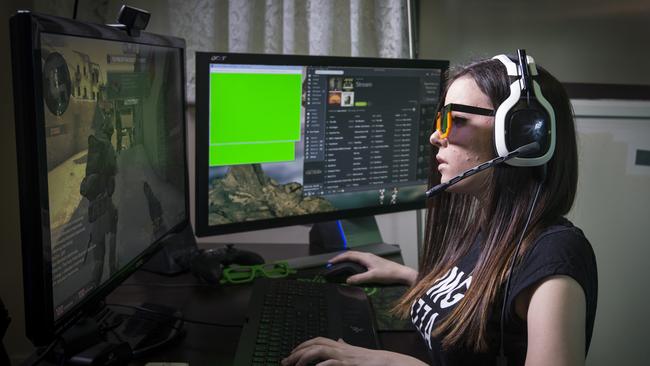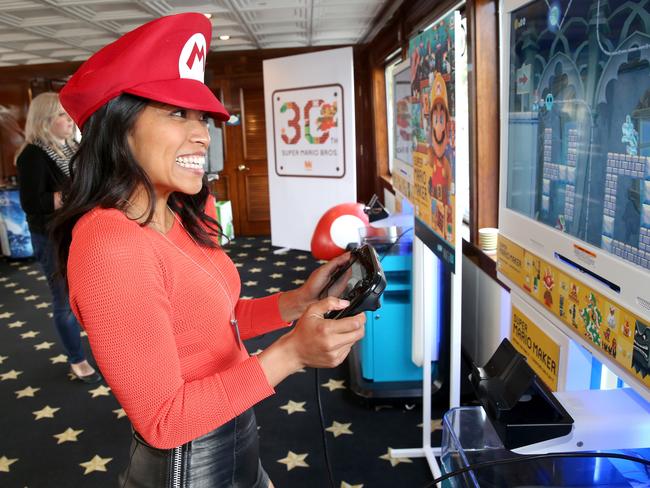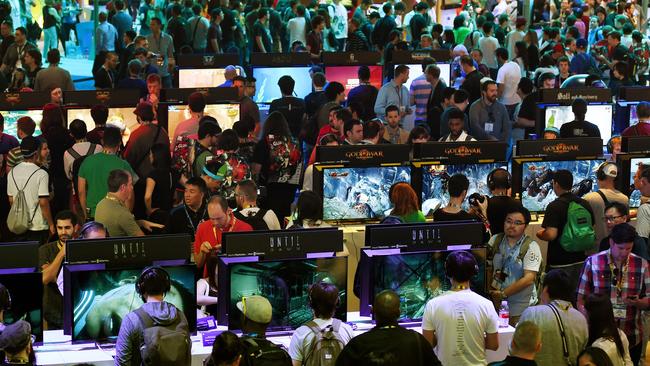Digital Australia Report: older Australians and women are the future of video games
SAY goodbye to the average video game player stereotype, now it’s grannies, grandpa’s and women driving the future of video games.

Playstation
Don't miss out on the headlines from Playstation. Followed categories will be added to My News.
VIDEO games are no longer child’s play.
In fact, most gamers are adults, the average age of players is 33, according to a national study released this week, and it is women and older Australians who make up the fastest growing gaming audience.
GAMING EXERCISE: Researchers create a video game to help players lose weight
FEMALE FIGURES: What video game heroines would look like
The Digital Australia Report 2016 also showed Australians spend longer than a standard work day playing video games every week — five times more time than just a decade ago.
The sixth video game report of its kind, created by Bond University and the Interactive Games and Entertainment Association, surveyed 1274 Australian households and 3398 people.

Author and Bond University communications professor Jeffrey Brand said it showed video games had become a powerful form of entertainment in Australia, with two thirds of Australians now playing games and most (78 per cent) over the age of 18.
Dr Brand said the time Australians spent playing video games had also skyrocketed, particularly when compared to the first Digital Australia study, and largely due to smartphone games.
“In 2005, it was once or twice a week for an hour at a time, so two hours a week,” he said. “This time we nailed it down to 88 minutes every day.
“Most people play casual games two to three times a day and those short bursts are usually about 10 minutes in duration.”
Combined with an hour of “in-depth” game play every day, Australians spend more than 10 hours on average playing games every week.

But the typical Australian gamer looks very different to the old stereotype of a teenage boy.
The report found the average age of gamers had grown to 33, up from 24 years in 2005, and women were close to equal representation in the gaming community, making up 47 per cent of gamers.
Dr Brand said women had rapidly adopted games between 2005 and 2009, when gaming apps arrived on smartphones, and he predicted more would join as games genres diversified.
“Why do we have that remaining four per cent not taking up games? The small increases we’ve seen in recent years haven’t ticked past 47.5 per cent but I think we’ll see that change in due course.”
Dr Brand said just like the gender gap when it came to fiction, more women would join when developers created a wider variety of games, including female-focused titles.
“What if we started getting romance or relationship games?” he said. “That would close the gap faster than anything.”
But the future of video games appeared to rest in more experienced hands, according to the survey results, with Australians aged 50 and over proving to be the fastest growing segment of game players.

More than a third of Australians over the age of 65 played video games, the report found, and Australians over 75 would represent one in every 10 gamers by 2018.
Dr Brand said more mature gamers often participated in video games for different reasons, with more seeking mental stimulation, even though more research on its health benefits was needed.
“I would like to see more older Australians playing games because games may well offer tremendous benefits,” Dr Brand said.
“If nothing else, more older adults playing will improve literacy and awareness for the digital economy, and probably open conversations with younger people.”
Australians spent more than $2.4 billion on video games last year, according to the IGEA, a 20 per cent increase on 2013.
IGEA chief executive Ron Curry said the investment was proof that games were overtaking traditional pastimes as a source of entertainment.
“Whether we’re snacking on a mobile game or enjoying an immersive gaming experience, it’s clear that video games are on the way to becoming more mainstream than playing sports or watching TV,” he said.
Originally published as Digital Australia Report: older Australians and women are the future of video games


